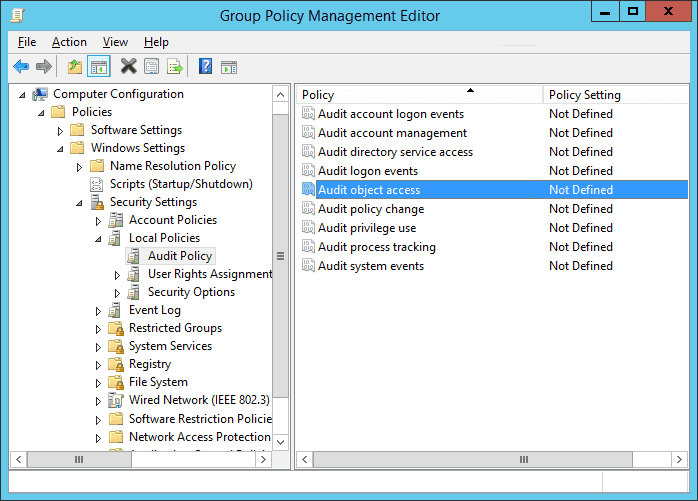

Now add an entry for Everyone that enables successful use of the Change permissions as shown below.Īt this point Windows will begin generating two events each time you change permissions on this folder or any of its subfolders or files. For example, if you have a shared folder called c:\files, go to that folder in Windows Explorer, open the security tab of the folders properties, click Advanced and select the Auditing tab. (By the way, make sure you also enable Computer Configuration\Windows Settings\Security Settings\Local Policies\Security Options\Audit: Force audit policy subcategory settings to override audit policy category settings to make sure your audit policy takes effect.) Now you need to enable object level auditing on the root folders containing your unstructured data. You’ll find this in any group policy object under Computer Configuration\Windows Settings\Security Settings\Advanced Audit Policy Configuration\System Audit Policies\Object Access. Here’s how to do it with the Windows Security Log.įirst we need to enable the File System audit subcategory. Either way you need to know when this happens.

And of course, administrators can change permissions on any object. File permissions should normally be fairly static but end-users are (by default) the owner of files and subfolders they create and can therefore change permissions on those files. Therefore knowing when permissions change unstructured is critical to governance and control. Most of this unstructured data is still found on file shares throughout the network, and file system permissions are the main control over this information. Moreover unstructured data is usually a treasure trove of sensitive and confidential information in a format that bad guys can consume and understand without reverse engineering the relationship of tables in a relational database. Unstructured data is difficult to secure because there’s so much of it, it’s growing so fast and it is user created so it doesn’t automatically get categorized and controlled like structured data in databases. Unstructured data access governance is a big compliance concern.


 0 kommentar(er)
0 kommentar(er)
